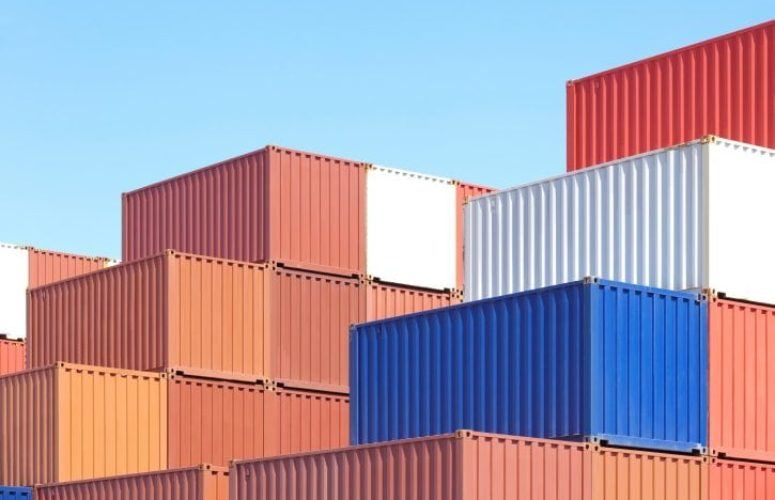
Port of NY/NJ at Strongest Competitive Position in Decades
Port of New York and New Jersey poised to overtake the Port of Long Beach as nation’s 2nd busiest port due to completion of Bayonne Bridge project and $1 billion in public-private investment in rail;
On Jun 18, 2019The Port Authority of New York & New Jersey bolstered its already lofty ranking among East Coast and national ports by announcing the completion of the ExpressRail Port Jersey facility, operated by GCT Bayonne – the final piece of the Port of New York and New Jersey’s intermodal rail network spanning facilities in Elizabeth, Newark and Staten Island. The new facility, coupled with the completion of the raising of the Bayonne Bridge to accommodate ultra large container vessels and over $4 billion in other modernization initiatives over the past two decades, has led to unprecedented cargo growth. Between 2009 and 2018, the number of containers handled at the Port of New York and New Jersey grew from more than 2.6 million to almost 4.1 million each year, an increase of 54 percent. That trend has continued and after the first four months of 2019, the port is poised to surpass Long Beach and become the nation’s No. 2 busiest cargo port for the first time in more than two decades.
These investments and the improved capacity, flexibility, and efficiency of the ExpressRail network have incentivized shippers to turn to Port of New York and New Jersey to quickly supply not only the northeast but also the Midwest and Canada. 75 percent of all container carrier services make the Port of NY/NJ their first port of call on the East Coast. Given the efficiency with which the Port’s terminal operators and ExpressRail move containers to and from growing markets, the largest ships have dramatically increased the number of containers unloaded and loaded here rather than at ports further down the coast.
The opening of the network’s ExpressRail Port Jersey intermodal rail facility allows the port to advance its five-year strategic goal to handle more than 900,000 rail lifts a year, the equivalent of 1.5 million fewer truck trips traveling through local roads, which will greatly reduce congestion and greatly enhance air quality. The rail facilities were designed to reduce the port’s historical heavy reliance on trucks to transport cargo and expands its geographic cargo reach to inland hubs. Trucks still account for moving 85 percent of all containers on and off port terminals today.
Completion of the rail network culminates two decades and approximately $6 billion dollars of investment in the port to drive cargo growth, and in turn build on the 400,000 jobs and billions in economic activity the maritime facilities generate. In addition to the $1.7 billion Bayonne Bridge project and the $600 million in port rail network investment, the port has also deepened harbor channels to 50 feet, rebuilt wharves and berths, greatly enhanced its internal road network and installed improved security systems and infrastructure.
The investments have the Port of New York and New Jersey poised to overtake the Port of Long Beach as the nation’s No. 2 busiest port for the first time in at least two decades. From January through April 2019, the Port of New York and New Jersey reported 1,690,214 loaded TEUs (20-foot equivalent units) compared to the Port of Long Beach’s 1,669,440 loaded TEUs for the same period. The Port of New York and New Jersey surpassed Long Beach in volume of both loaded imports (1,203,674 TEUs) and loaded exports (486,540 TEUs).
“The port has been the lifeblood of the New York-New Jersey regional economy for decades, and completion of this intermodal rail project will only help to bolster our already strong position in attracting international cargo destined for the northeast region and beyond,” said Port Authority Chairman Kevin O’Toole. “We are committed to continuing our investments in infrastructure that will ensure continued cargo growth and the economic activity that results from it.”
“The billions of dollars the Port Authority has invested in the port over the past two decades, including the deepening of port channels to 50 feet, the raising of the Bayonne Bridge, and the full buildout of the port’s rail network are today paying major dividends with cargo volumes at all-time record levels,” said Port Authority Executive Director Rick Cotton. “Our priority is to continue the unprecedented growth our port has experienced in the past year and to do so in a competitive, efficient, sustainable way.”
Today’s opening to mark completion of ExpressRail Port Jersey, operated by GCT Bayonne, will help support the port’s cargo growth. With an annual capacity of 250,000 container lifts, ExpressRail Port Jersey connects GCT Bayonne to CSX and Norfolk Southern’s extensive rail network, allowing shippers to efficiently and seamlessly transfer their cargo from ship to rail and reach key inland markets in the Midwest, New England, Eastern Canada and elsewhere in a timely, efficient and environmentally friendly manner.
The ExpressRail Port Jersey intermodal rail facility consists of eight tracks for active loading and unloading of cargo from GCT Bayonne that connect to two lead tracks to and from the main freight rail network. It also consists of support and train storage track and two high-efficiency, all electric, regenerative powered, widespan, dual cantilevered rail mounted gantry cranes featuring LED lighting to load and unload containers in the intermodal yard.
Every container moved at ExpressRail Port Jersey, operated by GCT Bayonne, eliminates 1.5 truck trips. Over the life of the intermodal facility, reductions resulting from the switch from truck to rail transportation is expected to total 415 tons of nitrogen oxide and 108 tons of particulate matter, or the equivalent of taking more than 45,300 cars off the road. It also will reduce carbon dioxide emissions by 18,300 tons annually.
The cost of the ExpressRail Port Jersey facility is $149 million, including the Port Authority funded $56 million for GCT USA to complete final design and construct the intermodal container transfer facility. The remainder of the project, including lead tracks and storage track, accounts for the balance of the investment. The $149 million is recoverable over time through monies collected through the Cargo Facility Charge, a fee assessed on cargo shipped through the Port of New York and New Jersey to cover the cost of critical road, rail and security infrastructure projects. Port Authority capital funds were deployed to front-end the investment.
To access more business news, visit NJB News Now.
Related Articles:





